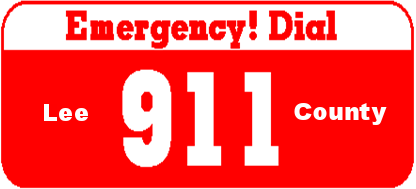Wireless 9-1-1
Cell phone calls to 9-1-1 have come a long way since the days when we had no information about you or your actual location.
As of May 2008 we have Phase II 9-1-1 service with all cell phone companies (carriers).
Scroll down for a description of how your location is determined.
With Phase II phones we get the latitude - longitude of the caller within the requirements of the FCC rules.
Accuracy Standards: The FCC adopted the following revised standards for Phase II location accuracy and reliability:
For handset-based solutions: 50 meters for 67 percent of calls, 150 meters for 95 percent of calls.
For network-based solutions: 100 meters for 67 percent of calls, 300 meters for 95 percent of calls.
Please Note: Phase II is is not available in all areas when you travel. There will be errors in locations as noted above.
Be prepared to give a location to the 9-1-1 Dispatcher!
Look around for landmarks, street signs, mile markers, addresses on mailboxes, store names, or anything else that will
help us locate the emergency.
Handset or GPS based location:
The GPS system consists of 24 earth-orbiting satellites. A chip embedded in the wireless phone receives signals from three or more satellites and calculates the location as described below.
123
A Chip-equipped phone measures the amount of time it takes for a satellite’s radio signal to reach the phone.
Since the speed of
radio signals is known, the distance from the satellite can be
calculated.The phone then
measures the time for a second satellite’s signal to reach the
phone.
The phone is at
one of the two points where the first and second circle overlap.When the phone can
receive a signal from three or more satellites the location
becomes precise.
then be transmitted to the 9-1-1 center and displayed on a map so
the Dispatcher can determine the proper responders.
Network or Triangulation location:
The towers can be existing cell-phone towers, water tanks, tall buildings, or other locations where receiving antennas can be mounted.Using the known speed of radio signals, the distance from receivers can be calculated. It takes at least three and preferably four to get a good location.
